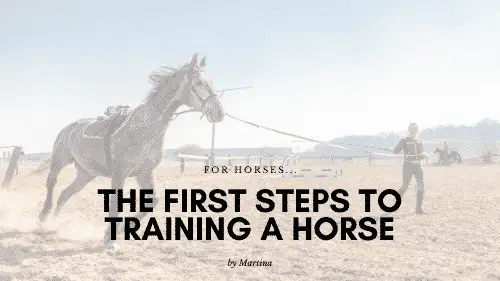You might think that the first steps to training a horse will depend on what type of training style you want to employ. When you search “how to train a horse” on Google you’ll find lots of buzz words and quick approaches.
You might have heard the term “natural horsemanship” for instance. There’s also training specific to types of horse disciplines (i.e. race horses vs. barrel horses vs. dressage horses). You can even find fun things like “clicker training”.
These are all very valid approaches. My thinking on how to train a horse is not really a specific approach as much as it is a system. A system of communicating with horses.
When I think of horse training, I like to stick with the basics.
I don’t train particularly for any one thing but rather I train for a general ability to communicate clearly with my horse. That way you establish a relationship and then go on to do anything you like. This may not be the fastest or most efficient way to train a racehorse, for example, but for my purposes it works well.
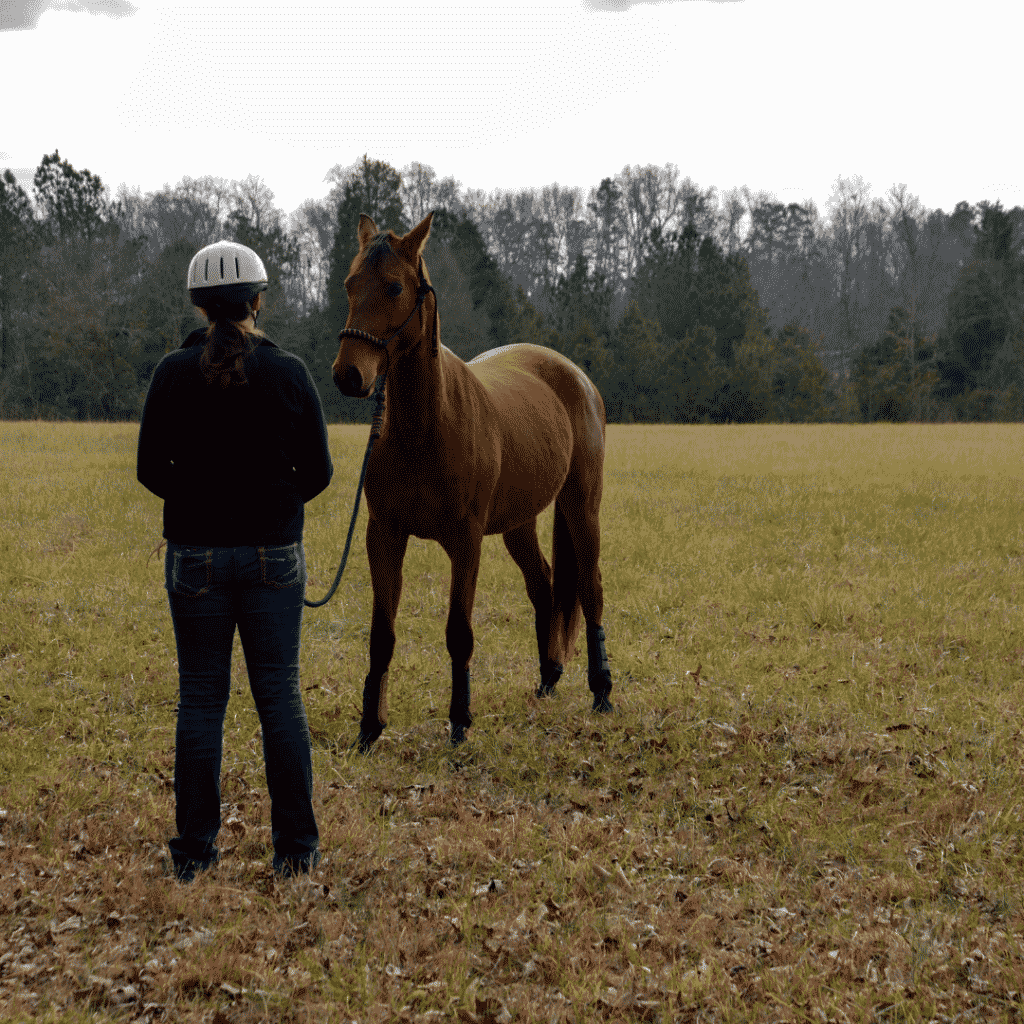
I think it’s important to establish a general understanding with your horse because you can build on that with any specific training.
How do I do this? I like to employ a mish-mash of different styles. This is based on 2 things:
- Horse psychology
- My #1 principle of interacting with horses:
If you can clearly communicate to your horse every time you’re around them that you have a plan along with the willingness and ability to enforce that plan, you’ve become the leader your horse craves and you’ve essentially learned the principles of horsemanship.
In my way of looking at things, horsemanship is the knowledge base that you have to have in order to train your horse. Once you learn horsemanship, you understand the principles of communicating with horses and thus can expand on that in order to train a horse from the ground up.
I suggest that you learn horsemanship first and implement it to confidently communicate with trained horses. Once you’ve established that you can use that to learn how to train a horse from the very beginning.
The 3 Belief Systems of my Approach to Horse Training
I have 3 beliefs that I adopt when I think of working with horses in any capacity. These really help me to communicate with them.
When it comes to horse training, it helps me to remind myself of these things when the horse isn’t doing what I would like. This helps especially when I’m too frustrated to stay patient and remember to wait the horse out.
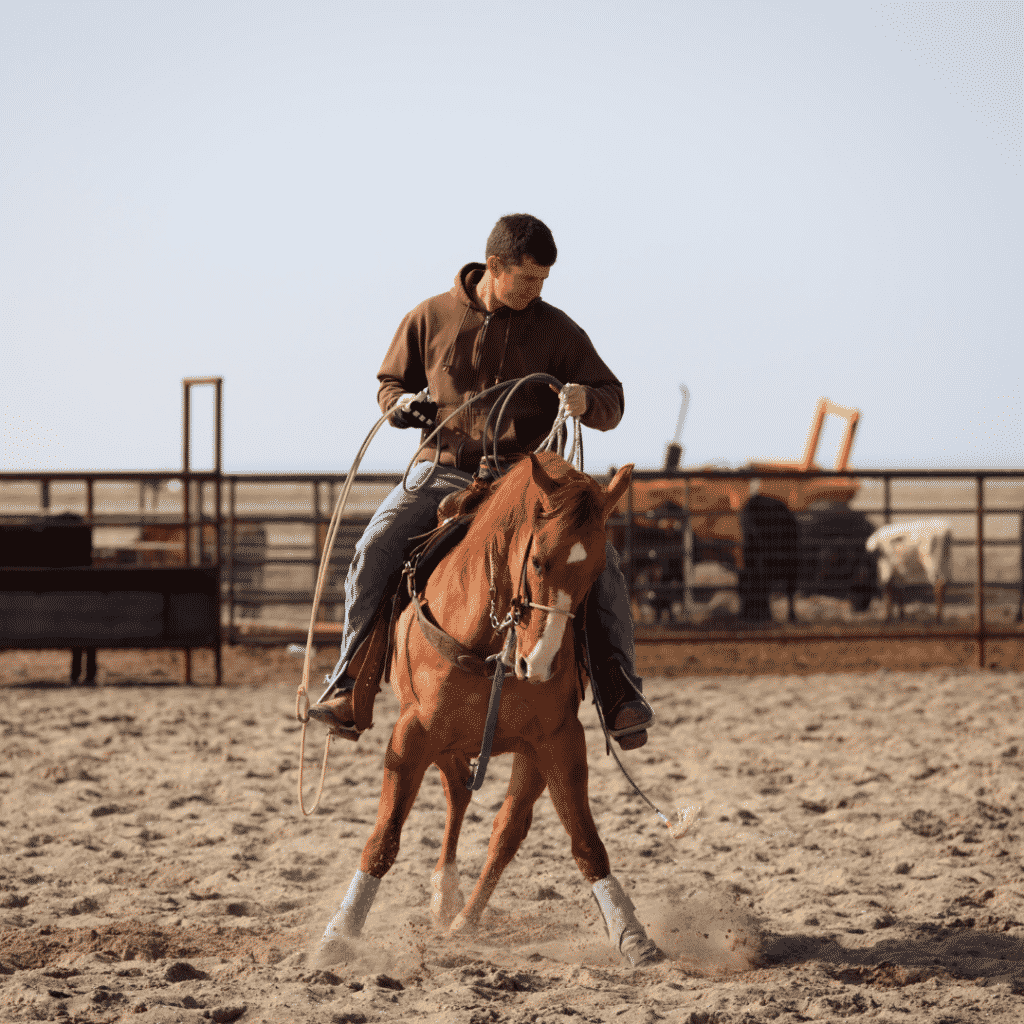
Just by the way, you can solve a LOT of your training problems by learning patience while you’re training. If you wait your horse out, the horse will guess right eventually in terms of what you want. But we’ll discuss that later!
For now, the 3 beliefs I want you to consider are the following:
#1: Horses are much more than “prey” animals.
#2: Horses are constantly trying to have a conversation with you.
#3: When the herd consists of you and the horse, one will become the leader and one will become the follower.
If you don’t agree with me that’s okay. I just invite you to consider these ideas and as you learn more about how to train a horse. As start implementing the training yourself, keep them in the back of your mind. You will eventually come up with your own belief systems anyways (and this is the goal!) but it’s nice to have somewhere to start.
How Committed Are You to Horse Training?
The saying “green + green = black and blue” is common in the horse industry. You’ve probably heard of it.
Essentially, if you’re a beginner yourself, it’s not a good idea to get a “green” horse. That is, you don’t want a horse that’s not well trained. If you do, there’s a risk of getting black and blue – injured. Rather, you’ll want your first horse to be a well-trained horse that you can learn to communicate with.

You can still learn so much from an experienced horse. You can learn the basics of horse communication, of ground work, of all the subtleties of riding and of handling. I would be very surprised if you ended up with the perfect horse who had nothing to learn. I’ve never come across a horse that listened to every single cue and had no difficulties anywhere.
Most horses, even experienced ones with a lot of training behind them, will have some things they need refreshing on. Some struggle with trailering. Others struggle with cantering smoothly. Some struggle with being caught in the field.
These are all things that you can work on and that you can build your confidence off of.
Once you know how to fix these issues and you learn the basics of communicating with horses, you’ll start to understand the system of training a horse from scratch. You’ll also quickly understand how much time, patience and dedication it takes.
How much time exactly?
This depends.
It depends on your experience. On how well you’re able to time your cues and your corrections. It depends how firm you’re going to be. Most of all it depends on how well your horse responds.
If you’ve ever trained a dog, you’ll know that some dogs can be house broken in a day whereas others take months and months.
Why Train a Horse from Scratch?
The more you’re able to communicate clearly with your horse, the stronger that bond becomes.
If your horse listens and learns from you, there’s a natural respect for your leadership that has to emerge. This is a very strong bond.
I want you to think back to your favourite school horse or that one horse that you learnt to ride on. Is there one that you always think back to because they were your favourite?
Why was that particular horse your favourite?
For me, when I was learning how to ride, I had a little black feisty pony named Satchmo. He would kick almost every single day and no one else liked to ride him. He also hated leading in group lessons and would routinely kick at other horses behind him. I just happened to get assigned to him. Initially, I was a little annoyed at how difficult he was.
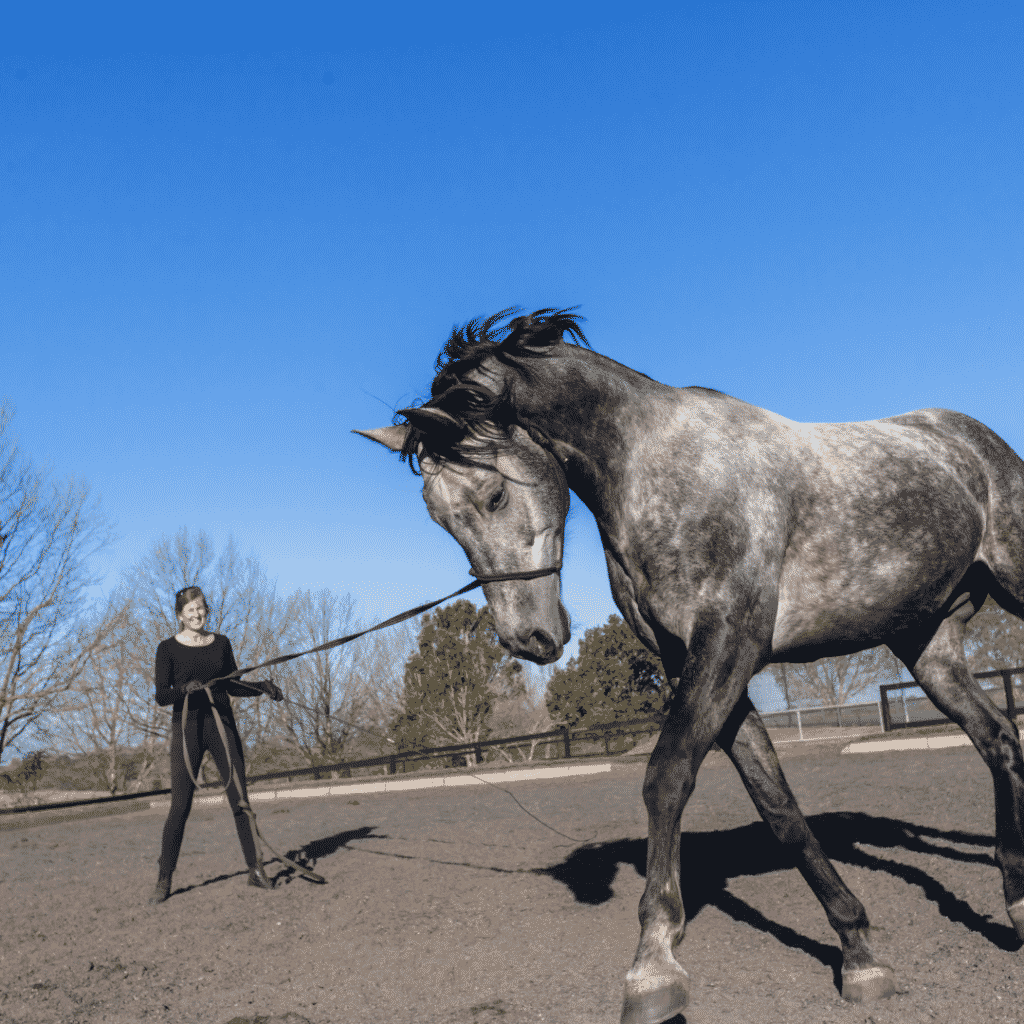
Then I started to learn his little quirks. I learnt what made him kick and how to avoid it. The exact rhythm of his canter. I learnt how his ears would behave right before he got mad at another horse.
Eventually I was able to communicate with him well enough and establish sufficient trust in order to do things like:
- Lead with him
- Ride him bareback in a group lesson
- Ride him bridleless
- Get fairly close to other horses without him kicking
The more time you spend with a horse, the better the connection. There is nothing like the connection and understanding built from training a horse from scratch. It’s basically like raising a child.
The more you invest in the horse, the better the returns.
Understanding Horse Psychology
Another important step to training a horse is to understand his or her instincts. It is very important you know learn how your horse behaves in different situations. It will not only help you to understand the behavior pattern of your horse. But, it will also help you easily understand how to train your horse.
Horses are gentle herd animals. They like to live in a peaceful environment and they are usually scared of other animals and humans. A horse will interpret the actions of human or other animals and then he will modify his response according to the situation.

Usually, if you reach out to a horse in a calm and friendly way, he will also behave accordingly. Due to being a herd animal, horses have this innate desire to lead or to be led by someone. If your horse takes you as a leader, he will follow you.
You should understand the instincts of a horse first and then try to establish a relationship of trust between you and him before starting the formal training.
Okay, But When Should I Start Training Then?
Let’s say you’ve got a really young horse on your hands.
It’s important that you realise that even though you won’t be riding that horse until they’re mature (two years old) there’s plenty of training that you can and should be doing.
Again, formally training a horse won’t really start until they’ve reached maturity. But you can teach them plenty of things before then. Ground work, for example, is hugely important.
Here is a sample schedule, from birth to two years old:
From birth to one year old:
Shortly after the horse is born, it’s really important that they get introduced to the halter. I’m talking a few days after birth, you should begin halter training – starting with wearing it for short periods, and slowly increasing. I know this seems really early, but it won’t hurt him, and will really help with getting him adjusted.
Another thing that can be done within the first year is to tie your horse. And you would hope so, right? Can’t have a foal running around totally free for a whole year!
It is preferable to tie your horse by the end of the first week after the birth. The sooner you do it, the better. Once he is big enough to resist tying, he might hurt himself – so it’s best to get him used to it ASAP.
Another thing that you can (and should!) do within the first year is to groom your horse. If you want a guide on how to do this, I have one here!
From one year to two years:
Now that you have introduced your horse to tying, wearing a halter and grooming, it is time to move forward. Around this time, you should introduce your horse to a bit and saddle – even though you won’t ride yet. If you’re interested, we have some information about bits that you can read here, and about saddles that you can read here.
As far as the saddle is concerned, you really just want to allow your horse to get familiar with it. Make him comfortable, and that way he won’t be afraid of it in the future.
From two years onward:
Now your horse is comfortable with the different equipment and is two years old! It’s time to start riding and start their formal training.
Training a Horse: Different Training Styles
Most people consider that there are two broad approaches to training a horse. These are traditional training and natural horsemanship or liberty training.
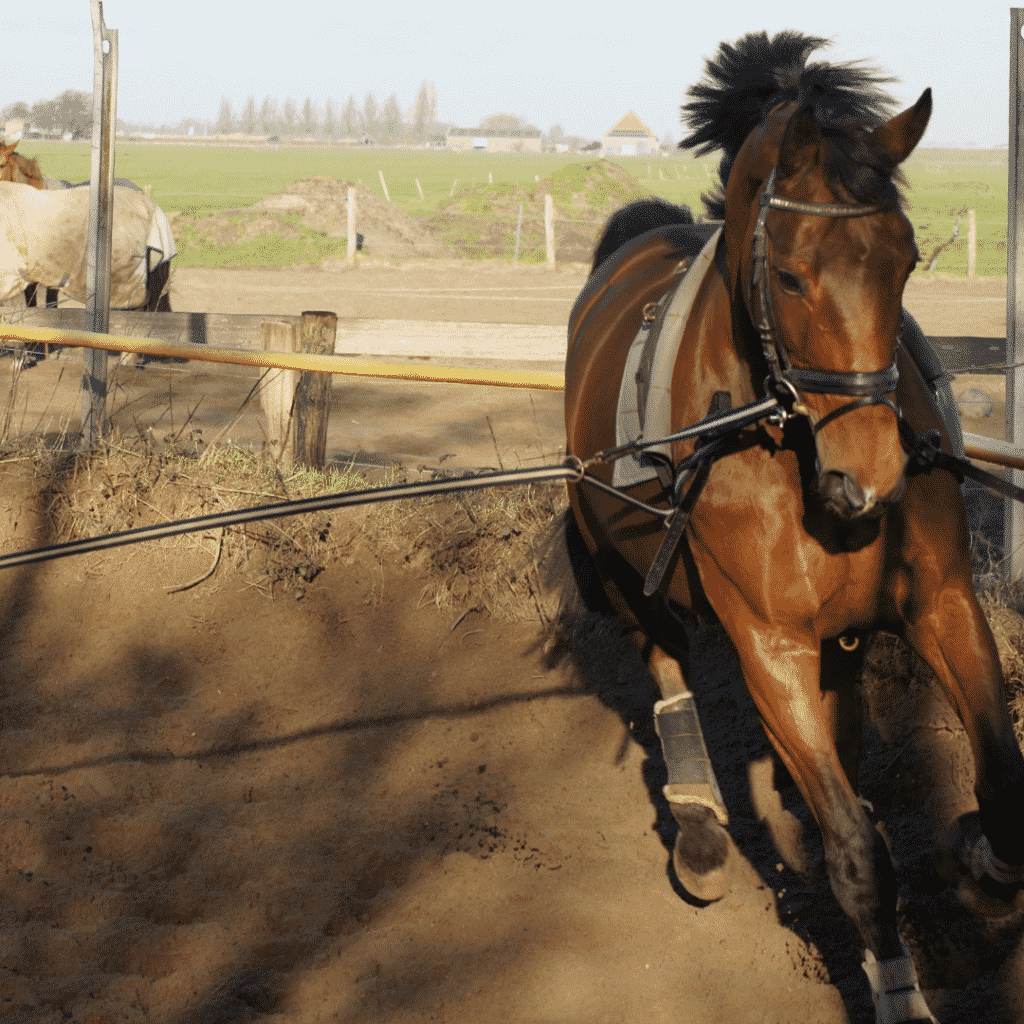
Traditional Horse Training
Traditional horse training works on your horse’s flight instinct. Essentially, over time it aims to teach your horse that instead of fleeing he should do what you’re telling him to do.
Generally this is done using routines to try and build good habits.
Often the routines focus on groundwork like lunging and long reining. If you’re interested, I have some explanations for common ground work exercises that are used in traditional horse training. Have a look!
Natural Horsemanship or Liberty Training
Natural horsemanship focuses more on horse psychology, and making it desirable for your horse to do what you want.
It uses pressure and release techniques to guide your horse while letting him think for himself. Ultimately you work to understand his instincts, and very gently guide him toward positive outcomes.
In this way some advocates of natural horsemanship think it’s as much about training yourself as training a horse. That’s what I meant when I was talking about learning patience: that’s a big part of natural horsemanship.
If you’re interested in learning more about how to train a horse using natural horsemanship and liberty training, I have a couple of articles you can read about it here and here! Our friend Equine Angel has also written a fantastic piece on her approach to liberty training, which is definitely worth a read.
The Best Approach to Training a Horse
Now that you know what are the first steps to training a horse, you might be wondering that what are the best ways to train a horse. Let me tell you, the best way to train a horse is to start early. The sooner you start, the better. By starting early, you will give your horse a chance to trust you and to bond with you.
For me, I would use a mix of the types of training I mentioned above. Ultimately no matter what you’re training a horse for, you want them to have good habits, positive associations and face their fears.
I hope you’ve enjoyed this piece on the first steps to training a horse. I tried to cover the holistic lessons you’ll need for your first steps training, but also some of the specifics on first steps for young horses. If you think I’ve missed anything, shout it out in the comments!
Martina 🙂
Liked this post? Why not pin it!


